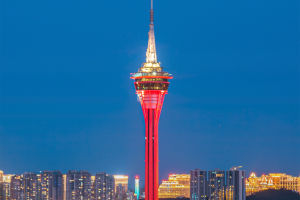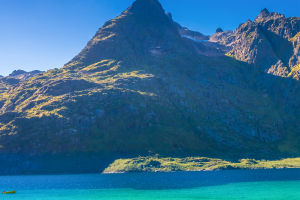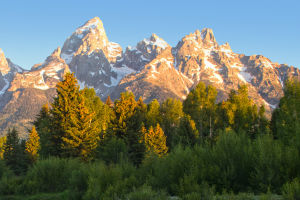In the vast plains of San Agustin, New Mexico, the Karl G. Jansky Very Large Array (VLA) awaits those captivated by science and the cosmos.
This iconic site, featuring 27 massive radio telescopes, offers Lykkers a unique experience blending earthly beauty with space exploration.
Key Information for Planning
Location: Very Large Array, San Agustin Plains, near Socorro, New Mexico
Entry Fee: $6 per adult, $5 for seniors, free for children under 17 (guided tour fees may vary)
Opening Hours: Open daily from 8:30 am to sunset, but closed on major holidays
Best Time to Visit: Clear days allow the best visibility, making spring and fall ideal seasons for the trip.
Getting to the Very Large Array
Located about 50 miles west of Socorro, New Mexico, the VLA is a bit off the beaten path but well worth the journey for Lykkers looking to witness something truly unique.
By Car: The most convenient way to reach the VLA is by car. From Albuquerque, it’s a two-hour drive along Interstate 25 to Socorro, followed by US-60 west. This scenic route showcases the beauty of New Mexico’s high desert, passing through small towns and open landscapes.
Public Transport: There is no direct public transportation to the VLA, so renting a car or joining a guided tour from Albuquerque or Socorro is recommended.
Parking: Free parking is available at the VLA visitor center. Plenty of spots are provided for both cars and RVs.
What to See and Do
The Visitor Center
Start your journey at the Visitor Center, where an informative video explains the VLA’s mission, history, and the science behind radio astronomy. This is an excellent introduction to understanding how the VLA collects radio waves from space, unveiling details about distant galaxies, black holes, and other cosmic phenomena.
Admission: Entry to the visitor center is included in the general admission fee.
Pro Tip for Lykkers: Take some time to browse the exhibits, which explain the basics of radio astronomy and the fascinating discoveries made here.
Self-Guided Walking Tour
The VLA offers a self-guided walking tour that takes visitors up close to one of the massive antennas. The tour path has informative signs, helping visitors learn about the operation and capabilities of the array. Standing next to these enormous 82-foot dishes, which rotate and move along the tracks, is an awe-inspiring experience. You can almost feel the magnitude of the scientific endeavors happening in this remote area.
Duration: The self-guided tour takes around 45 minutes to an hour.
Accessibility: The path is paved and wheelchair accessible, making it suitable for all visitors.
Guided Tours
For those wanting a deeper understanding, the VLA offers guided tours on the first Saturday of each month. Led by knowledgeable staff, these tours provide exclusive insights into the VLA’s operation and its scientific significance. You’ll also learn about its appearances in films and documentaries, such as the movie Contact, which brought the VLA’s intriguing design to popular attention.
Cost: Guided tours are included in the general admission fee but fill up quickly, so arrive early.
Duration: Approximately 90 minutes
Antenna Assembly Building
If visiting on a guided tour, Lykkers may get to see the Antenna Assembly Building. Here, technicians maintain and upgrade the VLA's antennas. This behind-the-scenes look provides a glimpse into the engineering marvels that make space exploration possible.
Practical Tips for Visiting the VLA
Weather Considerations: The high desert climate can be extreme, with temperatures varying widely between day and night. Dress in layers, bring sunscreen, and prepare for strong winds.
Photography Tips: The expansive plains and the towering dishes make for striking photos. Sunrise or sunset offers the best light, casting beautiful shadows across the landscape. Be mindful of camera settings, as the bright desert light can create glare.
Stay Hydrated: At an elevation of 7,000 feet, visitors may feel the effects of altitude. Be sure to drink plenty of water, especially on sunny days.
Nearby Attractions
Socorro
After exploring the VLA, head to Socorro, a charming small town with local eateries, art galleries, and a vibrant history linked to New Mexico’s mining and railroad industries. It’s a great place to enjoy a meal and take in the southwestern charm of New Mexico.
Bosque del Apache National Wildlife Refuge
Located about an hour east of the VLA, this wildlife refuge is famous for migratory birds, including sandhill cranes and snow geese. The refuge’s scenic trails and bird-watching opportunities make it a lovely stop for nature enthusiasts.
Magdalena Ridge Observatory
Situated near the VLA, this observatory offers stunning night sky views and a chance to learn more about astronomy. Although it requires an advance reservation, it’s an exciting addition for Lykkers interested in seeing the stars up close.
Useful Information for Lykkers
The Very Large Array is not only an incredible scientific facility but also a unique travel destination that invites visitors to ponder the vastness of the universe. Standing next to these massive antennas, one can feel both the solitude of the high desert and the immense scale of human curiosity.
Whether you're a science enthusiast or simply curious about the unknown, the VLA provides a memorable experience. From learning about black holes and galaxies to photographing these monumental dishes against the desert landscape, a visit to the Very Large Array will leave you with a deeper appreciation for both Earth and the cosmos.


